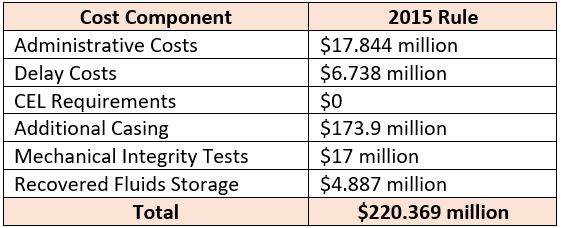Rep. Darren Soto (D-Fla.) introduced legislation (H.R. 436) this week seeking to reestablish an Obama-era rule for fracking on federal lands, a bill that stands virtually no chance of passing.
The rule was repealed by the U.S. Department of Interior in December 2017 “to prevent the unnecessarily burdensome and unjustified administrative requirements and compliance costs of the 2015 rule from encumbering oil and gas development on Federal and Indian lands.”
In introducing his bill, Rep. Soto is trying to bypass a 2016 court ruling reaffirming that states, not the Bureau of Land Management or Environmental Protection Agency, have the authority to regulate hydraulic fracturing within their borders, even if it occurs on federal and Indian lands. The “Fracking Jurisdiction Act” (H.R. 484) would “grant the Secretary of the Interior and the EPA Administrator jurisdiction to regulate hydraulic fracturing,” according to Rep. Soto.
Duplicative and Unnecessary
Contrary to Rep. Soto’s assertion that his legislation would “solve that issue” of whether the federal government has jurisdiction to regulate hydraulic fracturing on federal lands, the U.S. District Court of Wyoming already determined that BLM and EPA do not have this authority. Judge Skavdahl’s 2016 ruling is pretty clear, stating, “…the Bureau of Land Management lacked Congressional authority to promulgate the regulations.” He continues,
“The Constitutional role of this court is to interpret the applicable statutory enactments and determine whether congress has delegated to the Department of Interior legal authority to regulate hydraulic fracturing. It has not.” (emphasis added)
More importantly, Judge Skavdahl explained the unnecessary and duplicative nature of the original rule:
“The Fracking Rule’s focus is on three aspects of oil and gas development – wellbore construction, chemical disclosures, and water management (id.at 16,128 & 16,129) – each of which is subject to comprehensive regulations under existing federal and/or state law.” (emphasis added)
A 2018 report from the Groundwater Protection Council reinforced this ruling:
“Regulation of oil and gas field activities is managed best at the level where regional and local conditions are understood and where rules can be tailored to fit the needs of the local environment. While some related oil and gas regulation does occur at the local and federal governmental level, on most issues the greatest experience, knowledge, and information necessary to regulate effectively rests with state regulatory agencies.” (emphasis added)
As Western Energy Alliance (WEA) president Kathleen Sgamma said when the rule was repealed,
“It was clear from the start that the federal rule was redundant with state regulation and politically motivated, as the prior administration could not point to one incident or regulatory gap that justified the rule. Western Energy Alliance appreciates that BLM under Interior Secretary Ryan Zinke understands this rule was duplicative and has rescinded it. States have an exemplary safety record regulating fracking, and that environmental protection will continue as before.” (emphasis added)
Burdening American Energy Producers
The BLM regulation was estimated to cost $345 million per year. Prior to the rule’s rescission, BLM estimated that rescinding the 2015 Fracking Rule would have cost savings ranging from $14 million to $34 million per year. But a comprehensive impact analysis by the Independent Petroleum Association of America (IPAA) and WEA found those savings would exceed $220 million annually. In fact, IPAA and WEA explain,
“By choosing a number of impacted wells within the actual range of completions over the last two years, and almost thirty percent lower than the number of wells that BLM used in its calculations, the Associations assert that their cost estimates are conservative and may understate the actual cost savings associated with rescinding the 2015 Rule.” (emphasis added)
The Associations break down this cost analysis as follows:

Source: IPAA, WEA comments to BLM, 2017
Conclusion
The fracking process is strictly regulated at the state level, and a federal court has affirmed that regulatory structure. Additionally, as IPAA president and CEO Barry Russell has said, there’s a legitimate case to be made that regulating fracking at the federal level would be duplicative:
“Our companies have already demonstrated that even without the implementation of the 2015 federal rule, we play a part in the solution to reducing carbon emissions. Under the strong environmental leadership of state regulators, clean-burning natural gas, unlocked by horizontal drilling and hydraulic fracturing, has helped the United States cut its carbon emissions to near 30-year lows. The Obama-era rule is nothing more than duplicative federal overreach that would limit access to public lands and cost independent producers tens of thousands of dollars per well to implement without any measurable environmental or safety benefits. Simply put, a federal hydraulic fracturing rule would hurt America’s energy dominance, economic growth, and well-paying U.S. jobs.” (emphasis added)
No comments:
Post a Comment